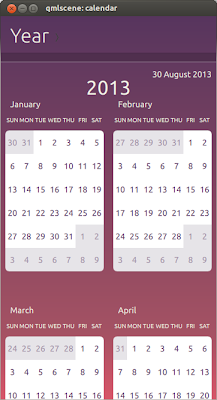I was working on update of my application Audiobook Reader. Currently my application has custom file browser that allow user to add file but I wanted to add allow user to add book/file directly from native BB10 file browser, like shown in below picture.
BB10 supports this usecase by Invocation API, your application can receive invocation from other application by using it. Your application can also use other application by the same way.
In my app, I just wanted to receive invocation from default File Browser. To do this we need to register our application as invocation target by entering details in to .bar file.
Following is entry for my app.
Here Target-Type mean can be Card or Application, Application will launch app as separate process, Card will launch app in scope of calling app.
Icon is your app's icon, that will be used by other app to display it in menu.
Action Open mean, suggested file can be opened by other app. Other possible value is View.
Mime-Type is type of file your application can support and exts mean, the extension of file that your app can handle.
<invoke-target id="com.example.AudiobookReader">
<invoke-target-type>application</invoke-target-type>
<invoke-target-name>Audiobook Reader</invoke-target-name>
<icon><image>icon.png</image></icon>
<filter>
<action>bb.action.OPEN</action>
<mime-type>audio/*</mime-type>
<property var="exts" value="mp3,..,..,..."/>
</filter>
</invoke-target>
Once this is done, Then we need to add handler code that will be called when other application invoke our app. To do that, we need to connect InvokeManager's onInvoke signal to our slot.
like below.
bb::system::InvokeManager invokeManager;
QObject::connect(&invokeManager, SIGNAL(invoked(const bb::system::InvokeRequest&)),
&helper, SLOT(onInvoke(const bb::system::InvokeRequest&)));
When our slot is called, we can retrieve URL and other information from InvokeRequest and do the further processing.
void Helper::onInvoke(const bb::system::InvokeRequest& request) {
mInvokationUrl = request.uri().toString(QUrl::RemoveScheme);
QFile file( mInvokationUrl );
QFileInfo fileInfo( file );
if( !QFile::exists(mInvokationUrl) ) {
showErrorDialog("Error Locating file!!");
return;
}
if( !FileModel::isSupportedMedia(mInvokationUrl)) {
showErrorDialog("Not valid Audio file!!");
return;
}
showAddBookDialog(fileInfo);
}
This is it, you can learn more about invocation framework from
here.




